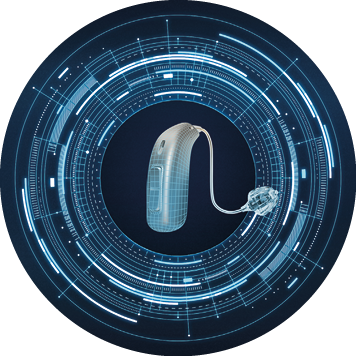
This blog post was last updated on 07/03/2025
Looking for the most advanced hearing aid technology for 2025? Well, look no further.
Artificial intelligence, motion sensors, Auracast, and LE Bluetooth audio are a few of the incredible new features that have been loaded into new hearing aids over the last 12 months. But the burning question is: which hearing aids are the best in 2025?
In this blog, we’ll list our top picks from each major hearing aid brand – including Phonak, Oticon, Signia, Starkey, ReSound and Widex, comparing their features and outlining what’s unique for each of them. Hopefully, we’ll be able to guide you in the right direction to find the best hearing aid for you.
Best hearing aids for 2025
- Oticon Intent
- Phonak Infinio
- Widex Moment
- Starkey Edge AI
- Signia IX
- ReSound Vivia
We’ll start by comparing them all physically and then throughout this blog, we will compare all of their individual features to help you make an informed decision.
Physical Characteristics
It makes sense to start by comparing the physical aspects of 2025’s newest hearing aids before diving into their individual features.
Kicking things off with Oticon, their Intent miniRITE is currently the only hearing aid available on their latest platform.
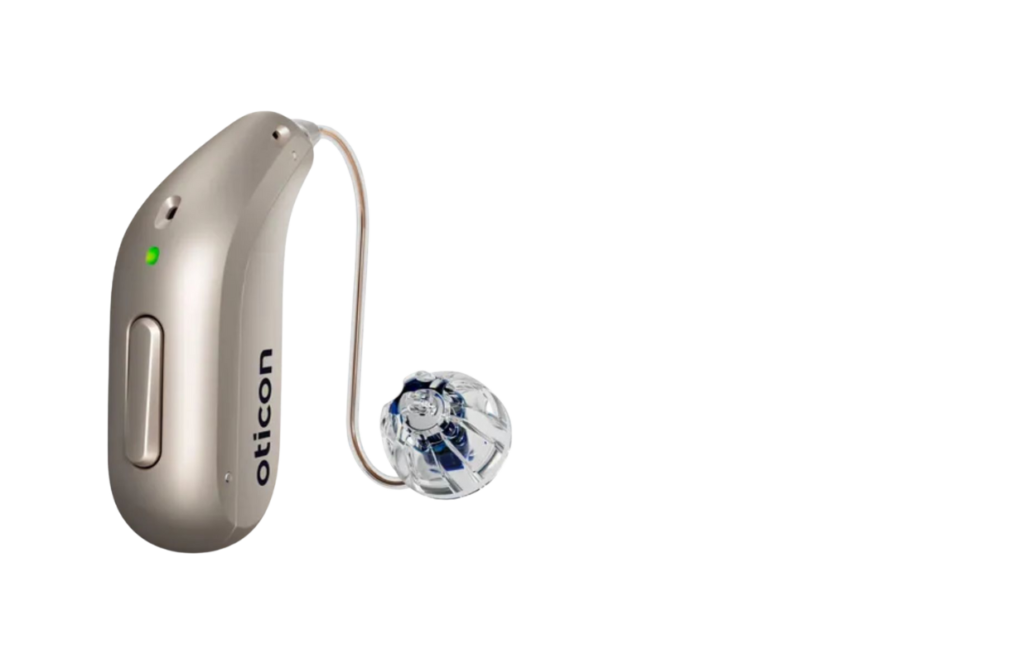
Phonak offers two models in their Audeo Infinio lineup:
- Audeo Infinio R
- Audeo Sphere Infinio R
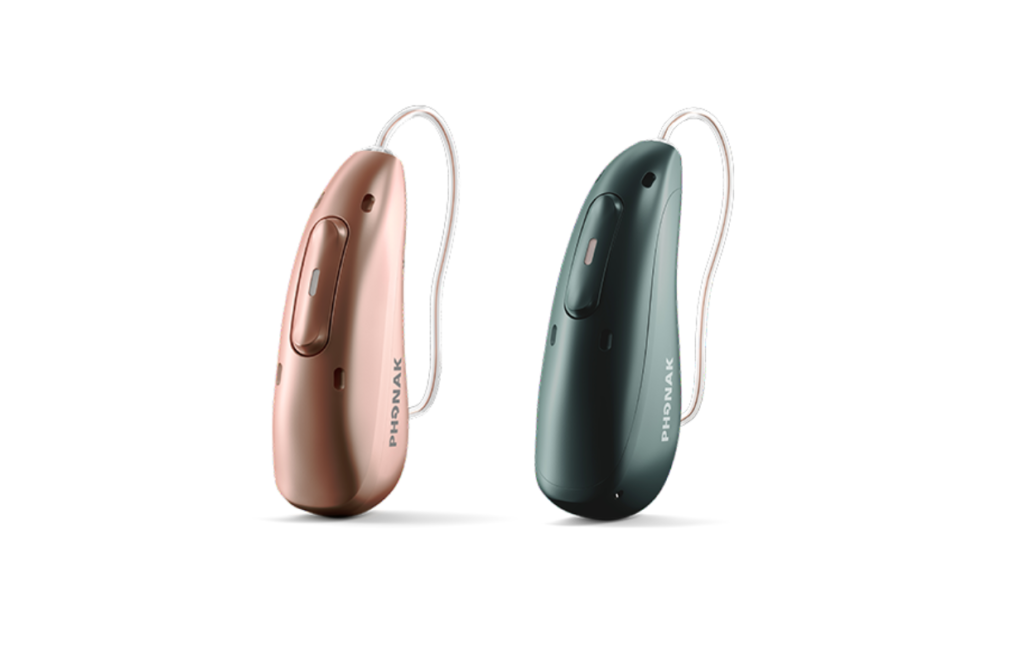
Starkey provides a wider selection within their Edge AI family, featuring three receiver-in-canal (RIC) models:
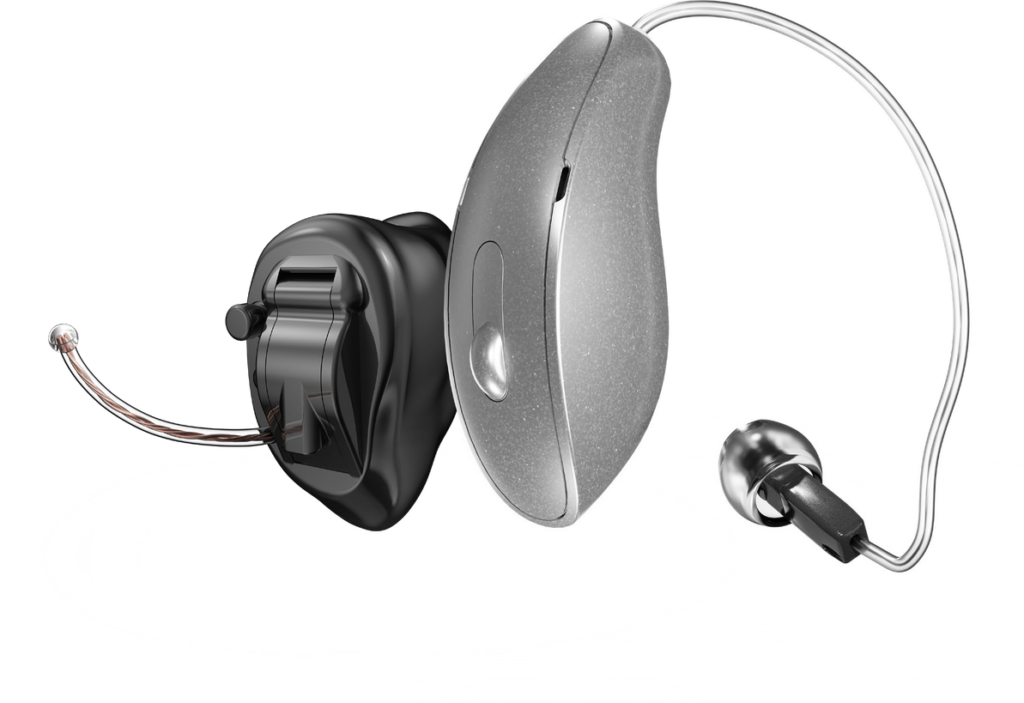
Widex currently has four hearing aids under its Moment platform:
- RIC 10 (the smallest model)
- RIC 312D
- sRIC RD
- Smart RIC
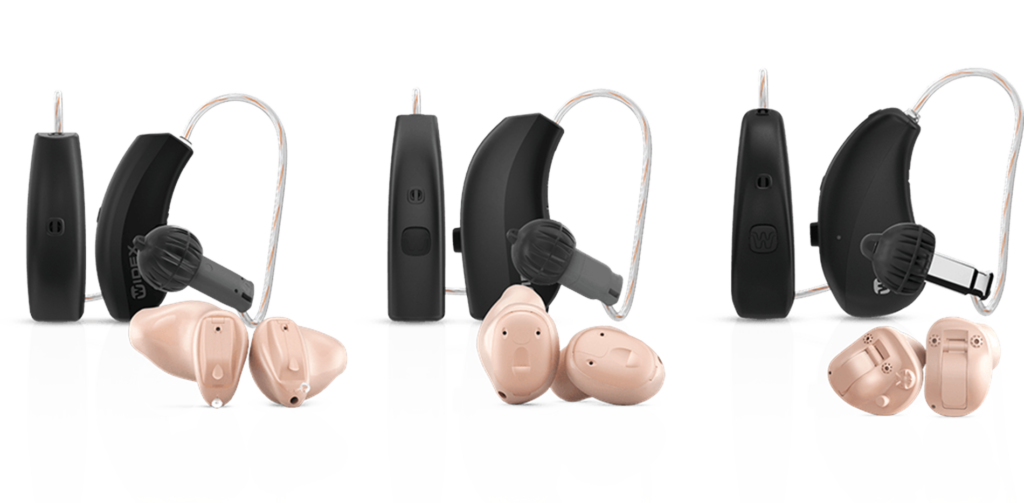
The ReSound Vivia family is the newest addition, launched in February 2025, and includes three models:
- Vivia RIE 312
- Vivia RIE 13
- Vivia Micro RIE

Finally, Signia has three receiver-in-canal (RIC) models in its IX lineup:
- Pure Charge&Go IX
- Pure Charge&Go TIX
- Styletto IX
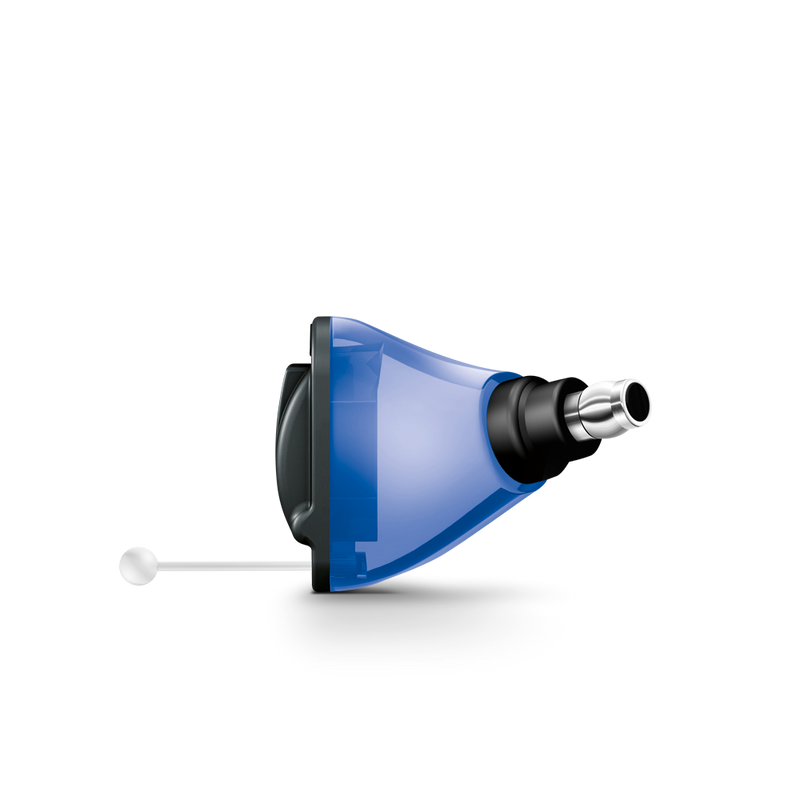
Before I break down individual features, let’s talk about size. If cosmetics are a priority, and you asked me to rank the top five smallest receiver-in-canal (RIC) hearing aids, here’s how they compare:
- Widex Moment RIC 10 (the smallest)
- ReSound Vivia Micro RIE
- Starkey mRIC R
- Phonak Audeo Infinio
- Widex sRIC RD
However, let me stop you there – choosing a hearing aid based solely on looks is a terrible idea. The most discreet models often lack important features, which I’ll cover later in this video.
If, on the other hand, you’re interested in fashion-forward hearing aids designed to be seen rather than hidden, both Widex and Signia offer stylish options in their latest lineups. Phonak Slim is another option, but since it’s not on Phonak’s newest platform, you’d be sacrificing advanced technology—something I wouldn’t recommend given the innovations packed into their latest models.
Colour options
There are far more important things to discuss when choosing the best hearing aid of 2025, so I won’t waste time going over colour options for each brand. Most manufacturers offer a wide range of colors designed to match various skin and hair tones, and no brand stands out significantly in this regard.
That said, based on what my patients typically choose, I recommend selecting a hearing aid that matches your hair color for the most natural look.
Suitability
Each hearing aid model has its own fitting range, which essentially determines the level of hearing loss it can accommodate.
You might be thinking, “I’ll just get the most powerful hearing aid available so it lasts as long as possible.” While that makes sense to some extent, there’s a catch—a more powerful hearing aid requires a larger speaker, and the more powerful the speaker, the bigger it is.
So, if discretion is your top priority, selecting the right power level is essential.
Beyond size, the power of the speaker also affects frequency response. More powerful speakers tend to provide less high-frequency gain, which is why it’s crucial to choose a power level that perfectly matches your hearing loss.
One of the many reasons I consider receiver-in-canal (RIC) hearing aids to be the best is their interchangeable speakers. This means If your hearing changes over time, you don’t necessarily need new technology—your hearing aid can be physically adapted to meet your needs.
The following outlines the fitting ranges for each manufacturer and their key models.
- Oticon Intent – Various receiver power levels
- Phonak Infinio – Includes a unique MAV (ActiveVent) receiver, which I’ll discuss shortly
- Starkey Edge AI – Multiple fitting options
- Widex Moment – The Moment RIC 10 has limited power due to its size 10 battery, only supporting S or M receivers
- Signia IX – Broad fitting range across their lineup
- ReSound Vivia – Features a specialist M&RIE receiver, similar to Phonak’s MAV, which I’ll highlight next
If your hearing loss is borderline for a particular model, I recommend choosing a 312D or Sheer option (where available). That way, if your hearing declines in the future, you’ll have more flexibility for adjustments.
Up next, I’ll dive into some specialist receivers that stand out for their unique features.
Phonak ActiveVent
Phonak ActiveVent is, without question, my favorite unique receiver technology. It’s been around for a few generations of hearing aids now, and trust me—you’ll want to stick around to hear what this thing can do.
At the heart of ActiveVent is a built-in moving piston within the custom mould. This piston automatically adjusts based on your listening environment, redirecting sound naturally through your ear canal or via the hearing aids. This dynamic adjustment enhances:
- Speech clarity
- Hearing in noisy environments
- The natural sound of your own voice
- Music and phone call quality when streamed
There are pros and cons to having your ear canals open or closed, and depending on your hearing loss, both configurations can be beneficial at different times. Before Phonak introduced ActiveVent, hearing aids couldn’t dynamically switch between the two—but now they can.

How ActiveVent Works in different environments
- Quiet environments → The vent remains open, allowing sound to move naturally in and out of your ear canal. This provides a more natural listening experience, helping you feel more connected to your surroundings.
- Noisy environments → The vent closes, ensuring that all sound is processed through the hearing aid’s noise reduction system. This prevents unprocessed background noise from reaching your ears and improves speech clarity.
Think about it—if unprocessed noise is traveling through your ear canal without passing through the hearing aid, it won’t have been filtered, cleaned, or optimised for clarity. ActiveVent solves this issue.
When you stream music or calls from your phone, ActiveVent automatically closes, blocking outside noise and enhancing sound depth and richness. This results in a more immersive listening experience, making streamed audio sound fuller and more dynamic.
ReSound M&RIE
ReSound offers its own innovative receiver technology called M&RIE (Microphone & Receiver In Ear). It’s the only receiver technology that features an extra microphone positioned at the entrance of your ear canal.
ReSound claims that by placing an additional microphone inside the ear, the hearing aid can better account for the natural shape and size of your ear anatomy. This results in a more immersive hearing experience with greater depth and also a sense of spatial awareness.
This microphone is automatically enabled in a quiet environment when you want to hear everything that’s going on around you, and then when the hearing aid detect any degree of background noise — let’s say in a restaurant for example — this additional microphone switches off, and then the directional microphones on the hearing aids kick in, giving you the most effective speech understanding in background noise that ReSound can produce.
As a result, ReSound claims that this improves sound localisation by around 15% when compared to omnidirectional BTE microphones, and around 10% when compared to hearing aids that provide pinna compensation.
From my clinical experience, both M&RIE and Phonak’s ActiveVent are more prone to feedback than conventional receivers. Because of this, I am very selective about which patients I recommend them to.
However, if you have mild to moderate hearing loss, M&RIE could be a fantastic option for you.

Personalisation
All receiver-in-canal (RIC) hearing aids can be physically customised to suit both your anatomy and your specific hearing loss. This is done by selecting either rubber domes, which provide a more generic fit, or custom-made ear molds that require your audiologist to take an impression of your ear and create a personalised fit.
The choice between these options is often left to your audiologist’s expertise, but I strongly encourage you to take an interest in this decision. If this part of your hearing aid isn’t right, then your devices simply won’t function as well as they should. While many people assume the tip is only about comfort, the reality is that it plays a crucial role in the clarity and sharpness of sound, the richness of audio, the quality of phone call and music streaming, and most importantly, how well your hearing aids perform in background noise.
The easiest and quickest option for both you and your audiologist is to fit a generic rubber tip, and while this can work for some people, it’s not always the best solution. I’ve seen many patients come into my clinic with hearing aids that weren’t performing as expected, and in many cases, a simple switch to a custom mold, combined with real-ear measurements and some fine-tuning, has completely transformed their experience.
If you are in the process of getting fitted for a hearing aid, I would strongly recommend asking your audiologist whether custom tips would be suitable for you. Whenever possible, I aim to fit them, as they can make a real difference in overall performance and comfort.
Looking at the fitting ranges of the hearing aids I’ve covered today, they all follow a similar pattern. Unless you have severe-to-profound hearing loss, most of these devices could be a great option for you. There’s plenty more to cover, so stay tuned!
User Controls
When it comes to controlling hearing aids, different users have different preferences. Some people like the ability to adjust their settings on the go, while others prefer their hearing aids to handle everything automatically without any manual changes. Each manufacturer offers a different approach to user control, which can be divided into two main categories: physical adjustments and adjustments made via a mobile app.
Rocker switch
The most versatile option, and my personal favourite, is the rocker switch. This design includes two soft keys on each hearing aid, allowing for a variety of customisable functions. The buttons can be programmed to control volume, mute the hearing aid, change programs for different environments—such as connecting to a loop system, TV, or a specialised setting for noisy restaurants—and even answer or hang up phone calls.
Single button
The second type of physical control is a single button, which still allows for some degree of adjustability, though it can be a bit more cumbersome to use. Instead of separate volume up and down buttons, the right hearing aid increases the volume, while the left decreases it. Other functionalities remain similar to those found in rocker switch-equipped models, but they require a bit more patience to use effectively.
Tap Control
For those who prefer an even more seamless interaction, the third category of user controls includes tap control. This feature is made possible by accelerometers built into the hearing aids, which also play a role in automatically adjusting settings based on movement. With tap control, users can answer or decline phone calls simply by tapping their ear. Phonak takes this a step further with the Audeo Infinio, allowing users to activate Siri or Google Assistant without even taking their phone out of their pocket. While not everyone takes advantage of this feature, those who do tend to love the convenience it offers.
No physical controls
For the fourth and final category—although it’s difficult to call it a full category when there’s only one hearing aid that fits this description—the Widex RIC 10 has no physical buttons at all. This means that all adjustments must be made through an external device.
Although physical buttons provide quick and easy access to essential controls, they do have their downsides. Adjusting settings using buttons on the back of the hearing aids can feel a bit fiddly, and while the devices will beep to confirm any changes, it’s not always as intuitive as visually seeing those changes on a screen. This is why mobile apps have revolutionised the way hearing aid users interact with their devices.
Each manufacturer has its own app, and while they all serve similar functions, some stand out above the rest. If I had to pick the best, my top recommendations would be Phonak’s MyPhonak app and the ReSound Smart 3D app. These apps are not only reliable and user-friendly, but they also provide access to a range of advanced controls that aren’t available through physical buttons alone.
For those using the Widex RIC 10, which lacks built-in Bluetooth (a topic I’ll cover in more detail soon), there’s still a way to make basic adjustments using the Widex ToneLink app. Instead of Bluetooth, this app communicates with the hearing aid through ultra-high-frequency sound. While not as advanced as other options, it still allows for some level of customisation and control.
Water Resistance
All the hearing aids I’m covering today come with an IP68 water resistance rating. This means they can technically be submerged in up to 1.5 meters of water for 30 minutes and still function afterward. This isn’t a rating exclusive to hearing aids—you’ll also find it on many smartphones, possibly even the one you’re using to read this right now.
That said, two manufacturers, Phonak and Starkey, have gone a step further by putting their hearing aids through extreme durability testing to ensure they can withstand the daily wear and tear that comes with regular use. Their robustness tests include exposure to simulated sweat, seawater, saltwater, chlorinated water, and freshwater.
Phonak has taken extra precautions to enhance durability. They’ve added additional microphone protection, sealed the seams with silicon, and coated the internal components with Parylene, a protective coating also used by NASA on spacecraft. These added reinforcements help protect the hearing aids from moisture, dust, and other environmental factors.
Starkey, on the other hand, has developed their Pro8 HydraShield waterproofing system. This includes a Kevlar-reinforced receiver—yes, the same material used in military-grade bulletproof vests. They’ve also redesigned the acoustic ports, added an internal microphone mesh barrier, sealed the casing with silicon, and applied a specialised coating to all internal components to maximise protection.

For most users, the standard IP68 rating will be more than enough to handle daily life. However, if you lead an active lifestyle that involves frequent exposure to water or moisture—whether it’s from intense workouts, outdoor activities, or working in humid conditions—one of these more robust models may be the right choice for you.
Battery power
As you’ve probably noticed by now, I like to group hearing aid technology according to their functions, and battery power is no exception. There are three main categories when it comes to hearing aid batteries and rechargeability.
Disposable batteries
The first group consists of hearing aids that rely on disposable batteries. Interestingly, the battery life isn’t determined by the hearing aid itself but rather by the size of the battery. Smaller batteries require more frequent changes. For example, the Widex RIC 10 is the only hearing aid in this discussion that uses a size 10 battery, which typically needs replacing every 3 to 5 days.
Other hearing aids in this category use a size 312 battery, which lasts approximately 5 to 7 days. The ReSound Vivia RIE 13 stands out as the only hearing aid in this review that utilises a size 13 battery, extending the lifespan to around 7 to 10 days before requiring a change.
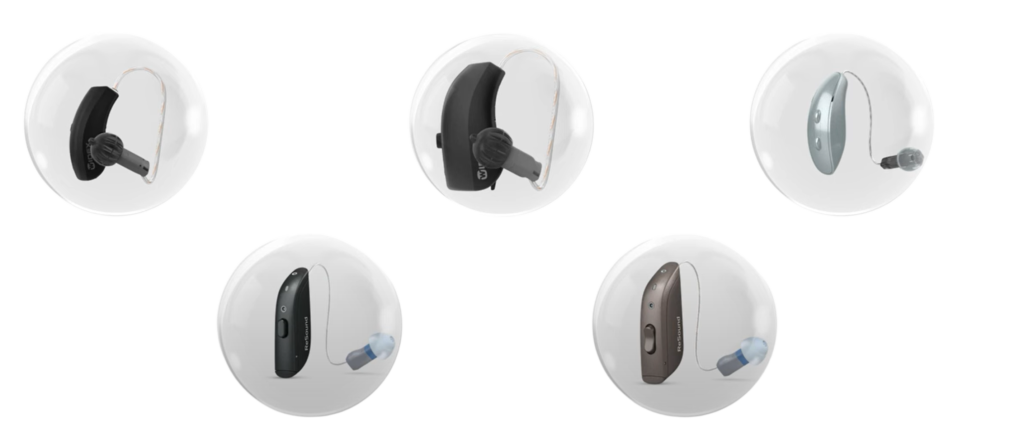
Rechargeable batteries
Rechargeable hearing aids can be further divided into two subcategories. The first includes those that provide around 24 hours of battery life per charge, which has become the industry standard since rechargeable hearing aids became widely available.
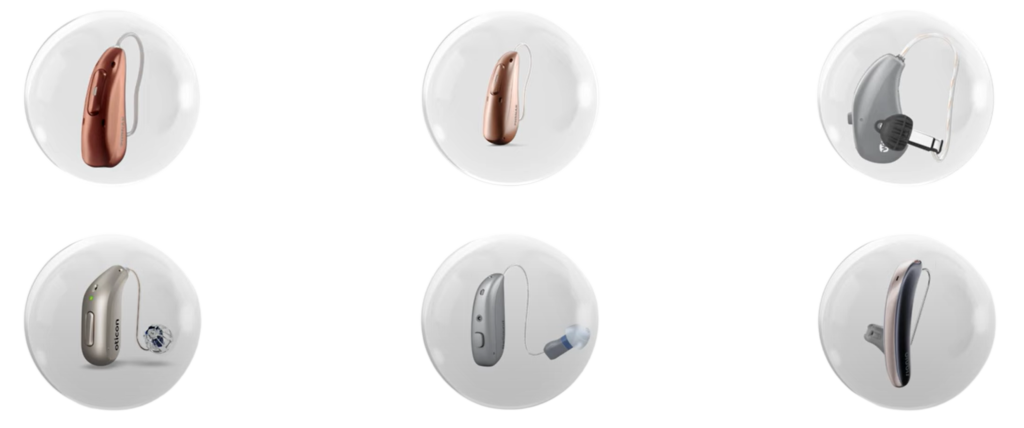
The second group consists of models from manufacturers such as Signia and Widex, which offer up to 35 hours of battery life on a single 3-hour charge. Starkey takes it even further, boasting an impressive 51 hours per charge. While you might assume this extended battery life is designed for all-night parties in Cancun, the real reason is more practical.

Lithium-ion batteries, which are also used in phones and laptops, tend to degrade over time. After a few years, a full charge may no longer last an entire day. Unlike a phone or laptop, where a dying battery is inconvenient but manageable, a hearing aid running out of power mid-day is a serious issue. The advantage of these extended battery-life models is that even as battery health declines over time, they should still provide enough power to last through a full waking day.
Patients who prefer disposable batteries are often those who travel frequently and don’t want to worry about carrying a charger. Others simply like the security of having spare batteries on hand.
For those opting for rechargeable hearing aids, the overall battery life varies between manufacturers, but I wouldn’t recommend choosing a hearing aid solely based on battery performance as long as it lasts a full day. If battery life starts to decline significantly, most manufacturers now offer replacements under warranty.
Technology Levels
Not only do these hearing aids come in various models, but each model is also available in different technology levels. These levels differ in how well they manage background noise, how clearly they provide speech distinction, and how effectively they perform in complex listening situations. Naturally, the more advanced the technology level, the higher the cost, and pricing can vary depending on the audiologist you visit.
To give you a better idea of these differences, I’ve compiled tables comparing the features of various technology levels within each hearing aid family, which you can see in the video at the bottom of this blog. For instance, you’ll find a breakdown of the Oticon Intent models, an overview of the varying features in the Phonak Infinio lineup, and a detailed comparison of Starkey’s Edge AI hearing aids. Additionally, there’s a table showing the different levels available within the Widex Moment family, another outlining the ReSound Vivia models, and finally, a feature comparison for the Signia IX hearing aids.
I’d strongly recommend taking the time to look through each table carefully, identifying the features that matter most to you, and discussing them in depth with your audiologist to ensure the best fit for your hearing needs.
Connectivity
Bluetooth has become an industry standard in modern hearing aids, allowing users to stream phone calls, music, radio, and podcasts directly to both hearing aids. Additionally, as mentioned earlier, each manufacturer’s app enables manual adjustments to hearing aid settings. However, connectivity isn’t as simple as it might seem—there are different types of Bluetooth protocols, each with its own pros and cons.
To break it down, I’ve categorised the top hearing aids of 2025 into five distinct connectivity groups.
Classic Bluetooth
Phonak is the only manufacturer that utilises classic Bluetooth, and its primary advantage is universal compatibility. These hearing aids can connect to any Bluetooth-enabled device, whether it’s old or new, a smartphone or a landline phone. No other hearing aid manufacturer offers this level of universal connectivity.

LE Audio (Original)
The second category includes hearing aids that use Low Energy (LE) Audio, originally introduced in 2010 as the way hearing aids connected to iPhones. This method is efficient and effective but does come with some limitations. While iPhone users benefit from bi-directional Bluetooth (allowing for hands-free calling using the hearing aids’ built-in microphones), Android users do not have access to this feature. Additionally, not all phones support Bluetooth streaming, meaning some users may experience compatibility issues.

LE Audio (Auracast-Ready)
The third group consists of the latest hearing aids from Signia, ReSound, Oticon, Starkey, and Phonak, all of which come equipped with the newest version of LE Audio, making them Auracast-ready. Auracast is set to revolutionise hearing aid connectivity, allowing public venues to broadcast high-quality audio directly to compatible hearing aids. Imagine being able to hear train station announcements, football commentary, or church sermons streamed directly into your hearing aids with better clarity and lower battery consumption.
While these hearing aids already have Auracast hardware built in, most manufacturers have not yet activated the feature. This is because there are still very few Auracast transmitters installed worldwide, and manufacturers are prioritising further testing before rolling out support via a simple (and free) firmware update.
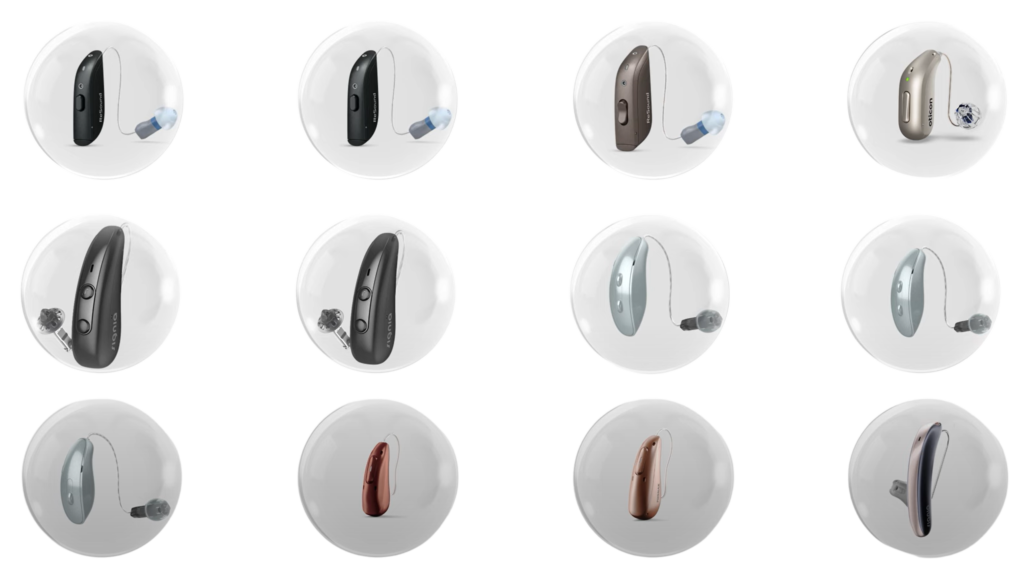
Loop System
The fourth connectivity category is a tried-and-tested alternative to Auracast—the loop system. This is essentially the 20th-century version of LE Audio, allowing sound from public venues to be transmitted directly to hearing aids. Until Auracast technology becomes widespread, the loop system remains a reliable way to access enhanced audio in places like theaters, airports, and lecture halls.
Telecoil
Most hearing aid manufacturers—except Phonak and Widex—offer at least one model with a built-in telecoil. This feature allows hearing aids to connect to loop systems, commonly found in public spaces like theaters, churches, and airports, providing clearer audio directly to the hearing aid.
However, some manufacturers require users to sacrifice rechargeability to access telecoil functionality, meaning you may need to choose between convenience and connectivity depending on your priorities.
A notable outlier is the Widex RIC 10, which doesn’t include Bluetooth or a telecoil. While this might be a drawback for some, it’s worth considering whether you personally need these features before making a decision.
When it comes to connectivity, there are plenty of options available, and it’s often one of those technologies that you don’t realise you need until you try it. Many of my patients have found telecoil and Bluetooth streaming to be game-changers in their everyday listening experiences.
Lastly, your smartphone choice can impact the features available on your hearing aids. iPhones tend to offer the most compatibility across manufacturers. If you’re considering a hearing aid purchase, I’d strongly recommend checking the compatibility lists on each manufacturer’s website or speaking with your audiologist to confirm which features you’ll be able to use with your phone.
Artificial Intelligence
Artificial intelligence is playing a significant role in modern hearing aids, with Phonak, Oticon, Starkey, and ReSound integrating offline AI to automatically adjust settings based on your environment. These hearing aids have been trained on millions of real-world sound environments—Oticon claims 12 million, ReSound 13 million, and Phonak boasts 22 million—allowing them to recognise and adapt to different listening situations with incredible precision. In fact, some models claim to make up to 80 million adjustments per hour, ensuring that speech clarity and background noise reduction are optimised in real time.
This AI-driven approach is designed to prioritise speech from the person in front of you, while simultaneously filtering out unwanted background noise, making conversations in challenging environments significantly easier. However, rather than relying solely on manufacturer claims, I always recommend looking at independent hearing aid tests, such as those conducted by HearAdvisor, to evaluate how well these AI-powered systems truly perform.
That said, Widex and Signia also utilise AI, but in a different way. Their hearing aids allow you to make manual adjustments through an app, which are then compared to thousands of other users’ settings in similar environments. The hearing aid can then fine-tune itself based on collective user data, optimising for your specific needs. The only downside to this approach is that it requires user input, whereas most people prefer their hearing aids to function as automatically as possible without needing manual tweaks.
Ultimately, AI is changing the game for hearing aid technology, but the effectiveness of these systems will vary based on individual needs and preferences. If you struggle to hear in background noise, it’s worth paying close attention to how different AI-powered models perform in real-world conditions before making a decision.
Motion Sensors
Building on artificial intelligence, hearing aids from Oticon, Phonak, Starkey, and Signia now incorporate accelerometers or motion sensors. This isn’t a brand-new feature, but it has evolved significantly. Signia introduced motion sensors back in 2019, followed by Phonak in 2020, Starkey in 2023, and Oticon in 2024.
So, why would hearing aids need motion sensors? Essentially, these sensors help hearing aids anticipate the specific needs of your listening situation based on your movement. For example, when you’re seated at a restaurant, you typically want to focus on the person in front of you, with maybe a little attention to someone sitting beside you. However, when you stand up and start walking, the hearing aid adjusts to let you hear more clearly from the side, as you’re unlikely to have someone walking directly in front of you.
This adjustment process is made possible by the motion sensors, which give the hearing aid real-time data about your movements, helping it to adapt its settings for maximum clarity. Interestingly, this feature is generally available only in rechargeable models from these manufacturers, making it a point worth considering when choosing between disposable and rechargeable hearing aids.
One thing to note, though, is that ReSound does use motion sensors too, but in a different way—mainly for tap controls, such as answering or hanging up calls, rather than enhancing hearing performance in dynamic situations.
Choosing the right hearing aid for you
The world of hearing aids is a difficult one to navigate, and there’s no one-size-fits-all solution. Everyone has different hearing needs and challenges, so it’s important that your audiologist chooses the right technology for you and adjusts it accordingly.
If you’re looking for personalised advice on your perfect hearing technology, contact Harley Street Hearing. Our team of highly skilled clinical audiologists can recommend the most suitable device for your needs.
Click here to join a mailing list to find out about all new hearing technology.
The best hearing aids for 2025
Matthew Allsop is a Partner at Harley Street Hearing, and a content creator for Hearing Tracker, where he shares his honest opinion on all new hearing aid technology. Hearing Tracker is the world’s first truly independent resource for hearing aid customers. You can view his video where he shares his opinions on the latest hearing aids for 2025 below.
Enjoy this article? You might be interested in some of our others:
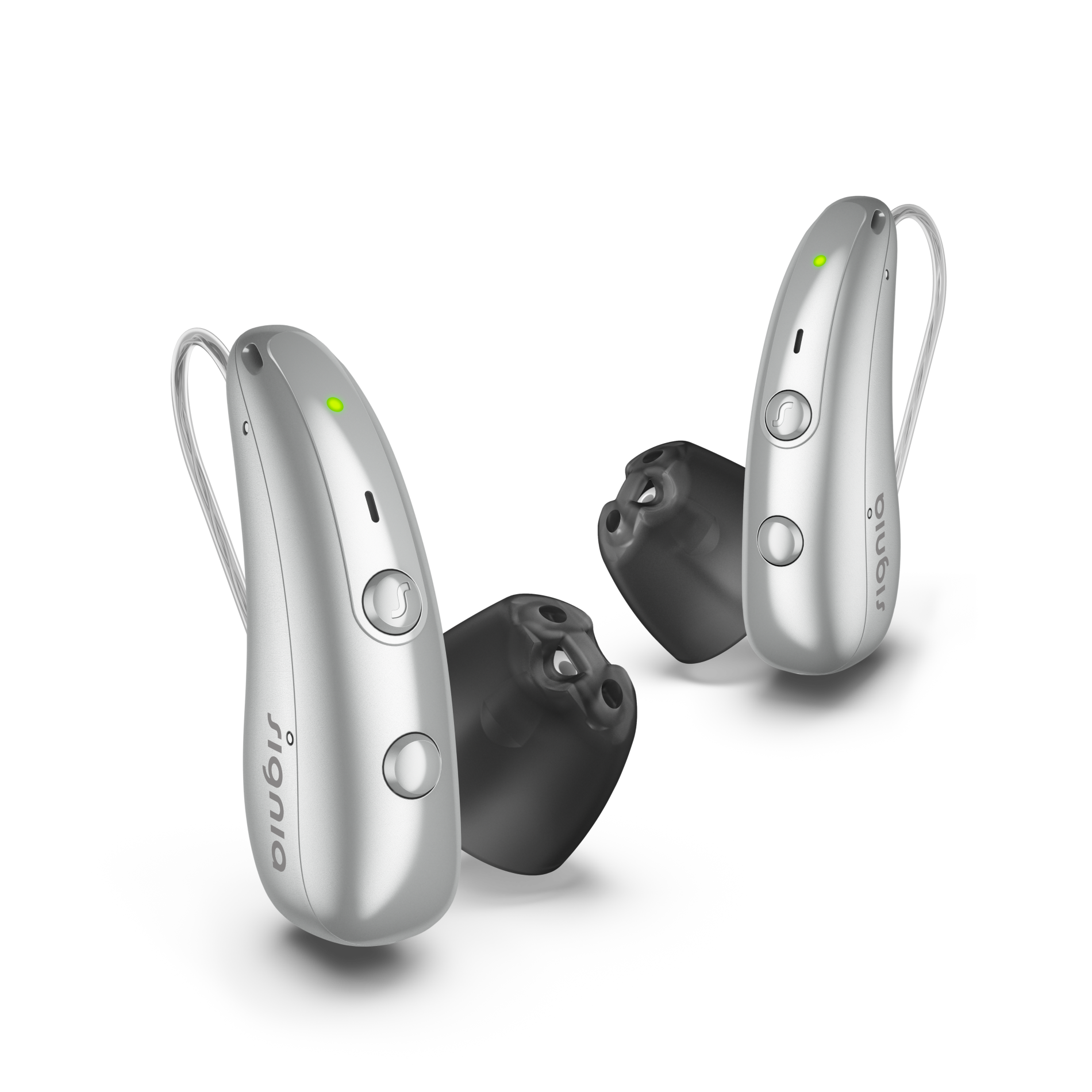
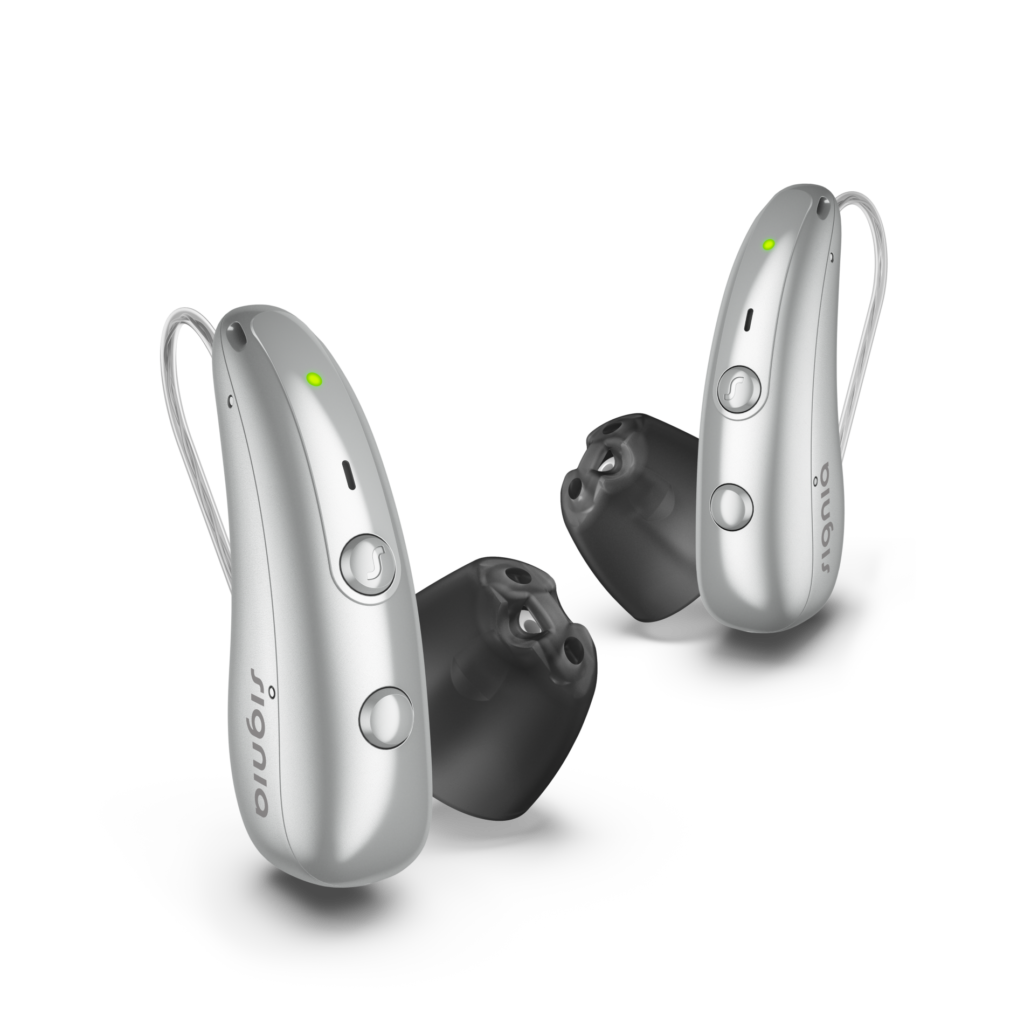
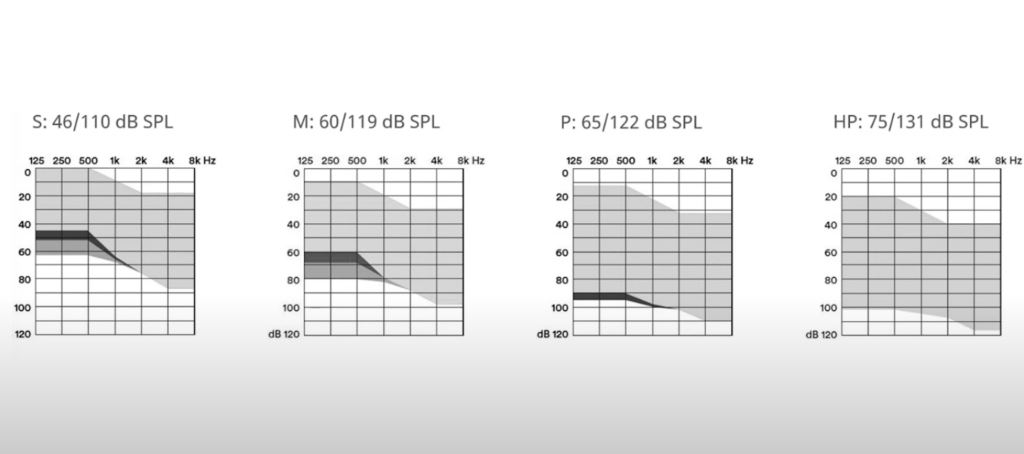

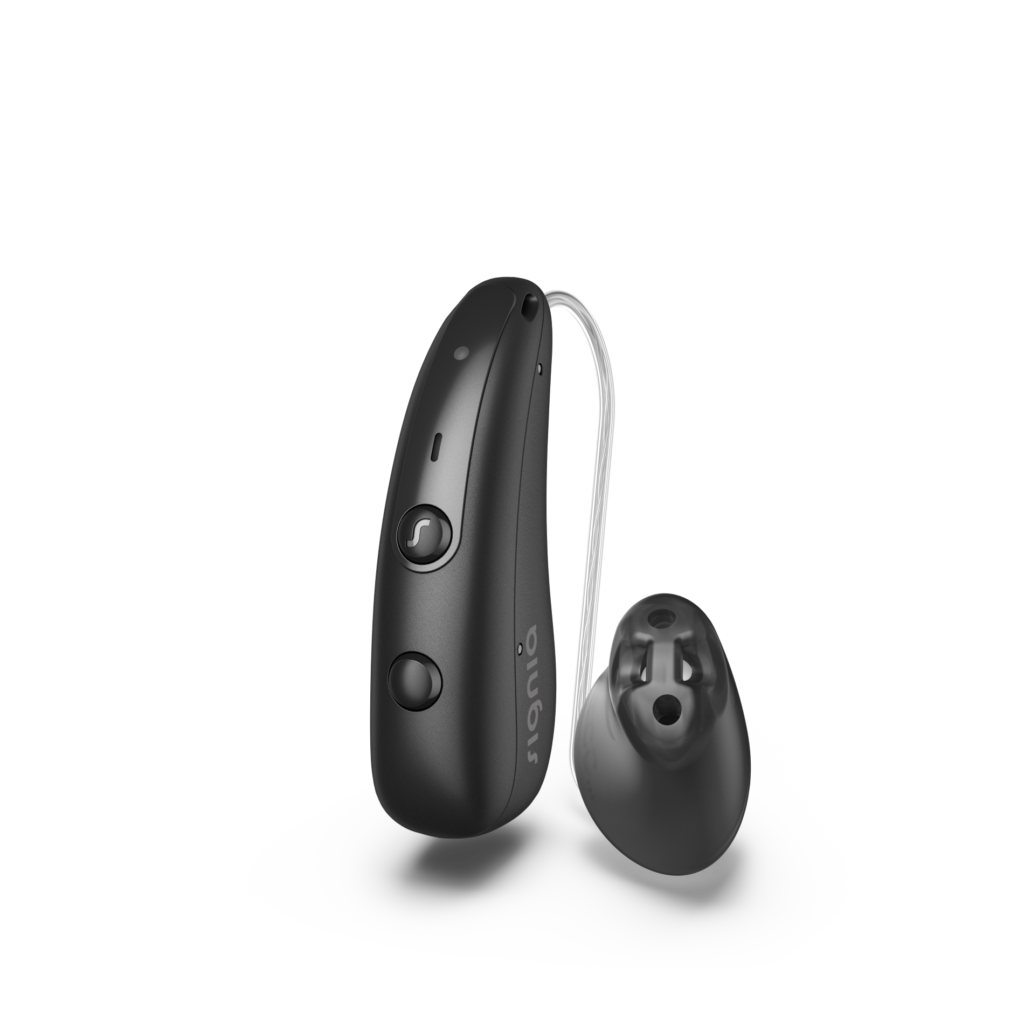












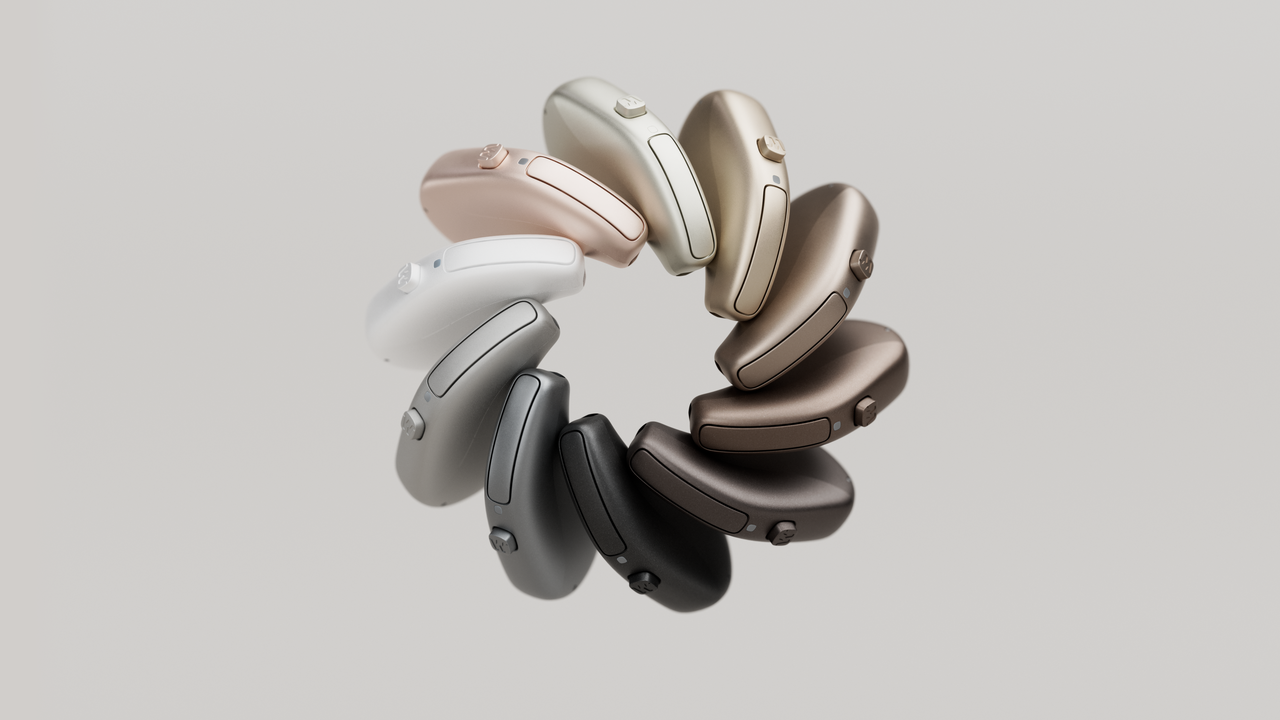
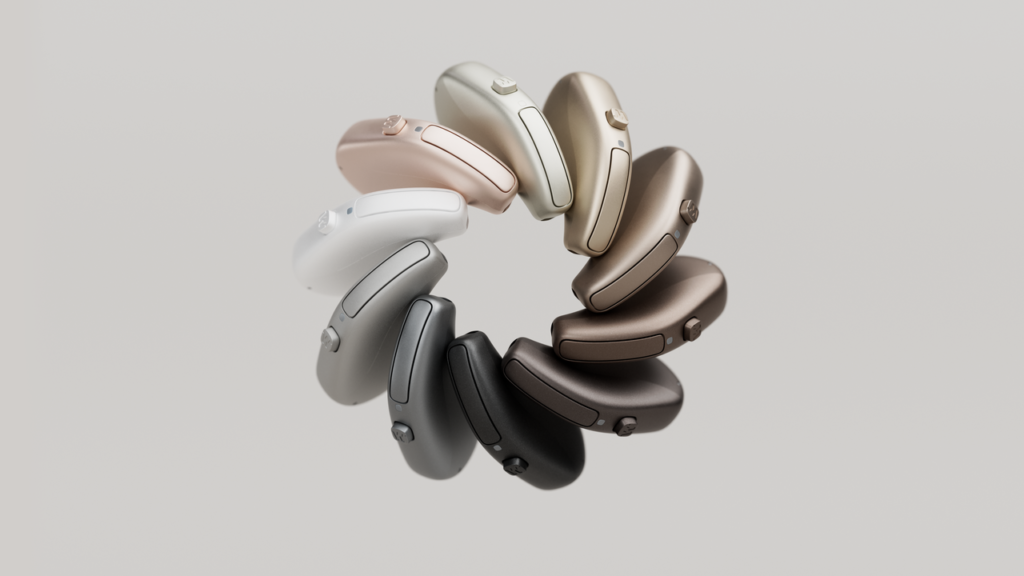

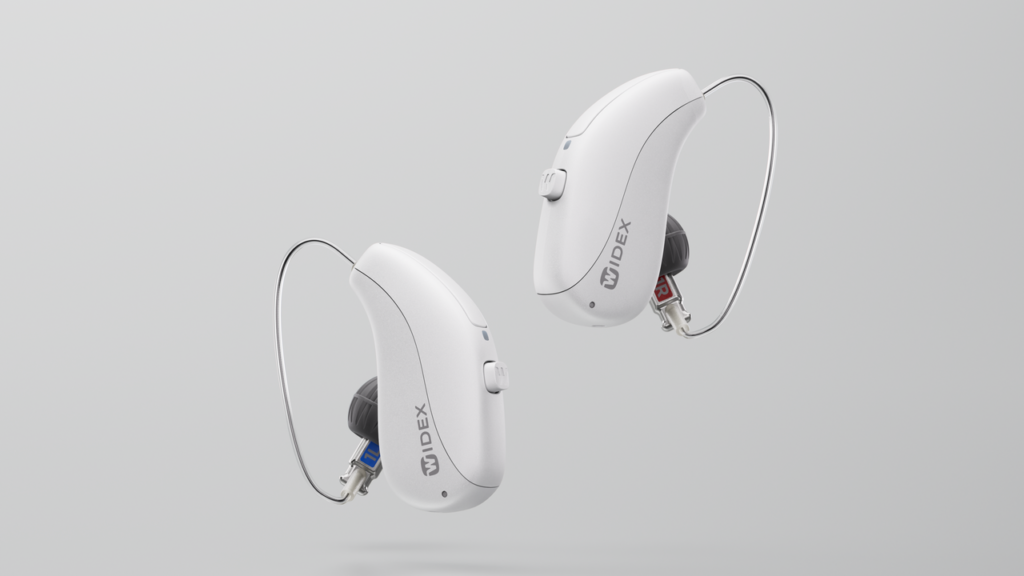

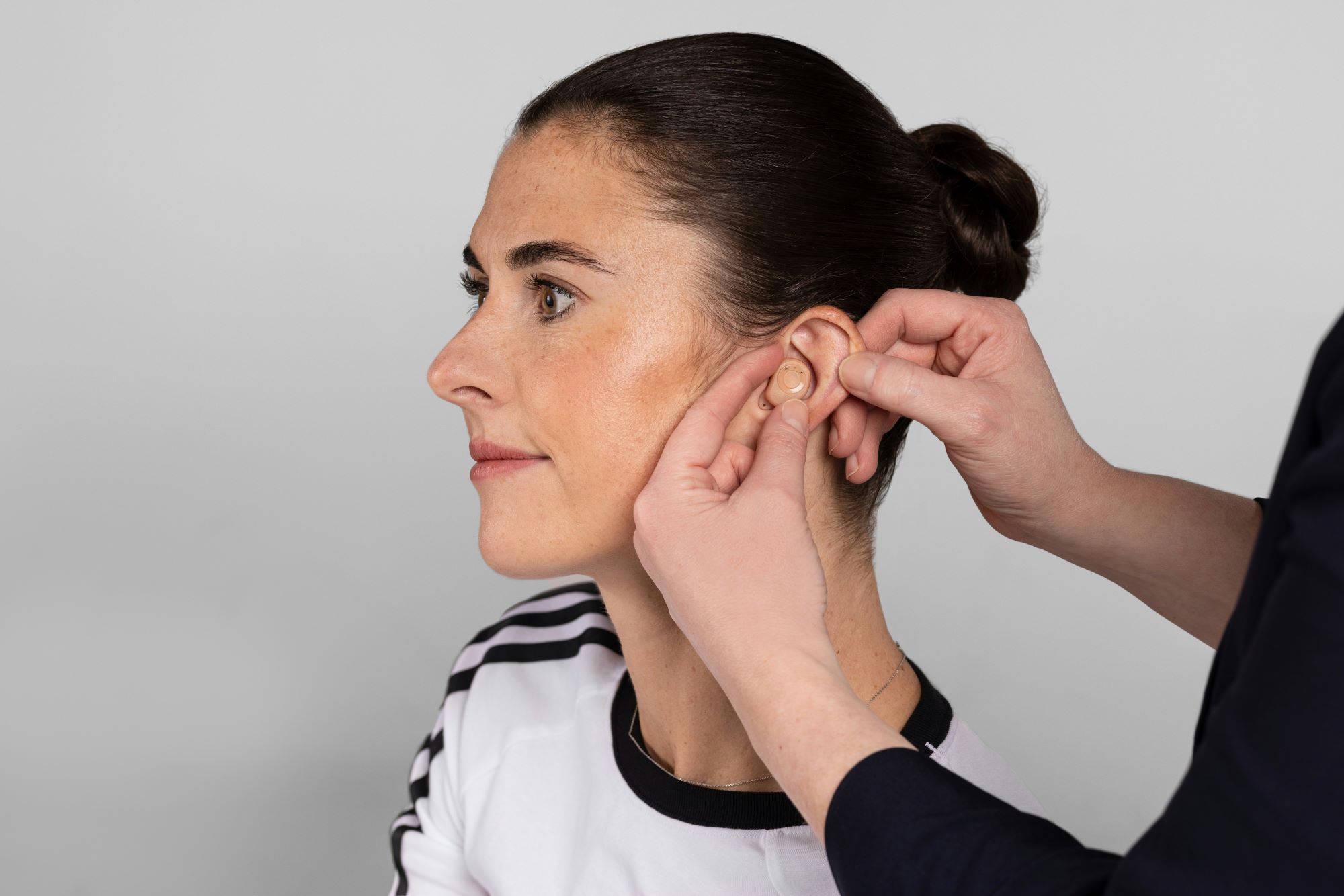
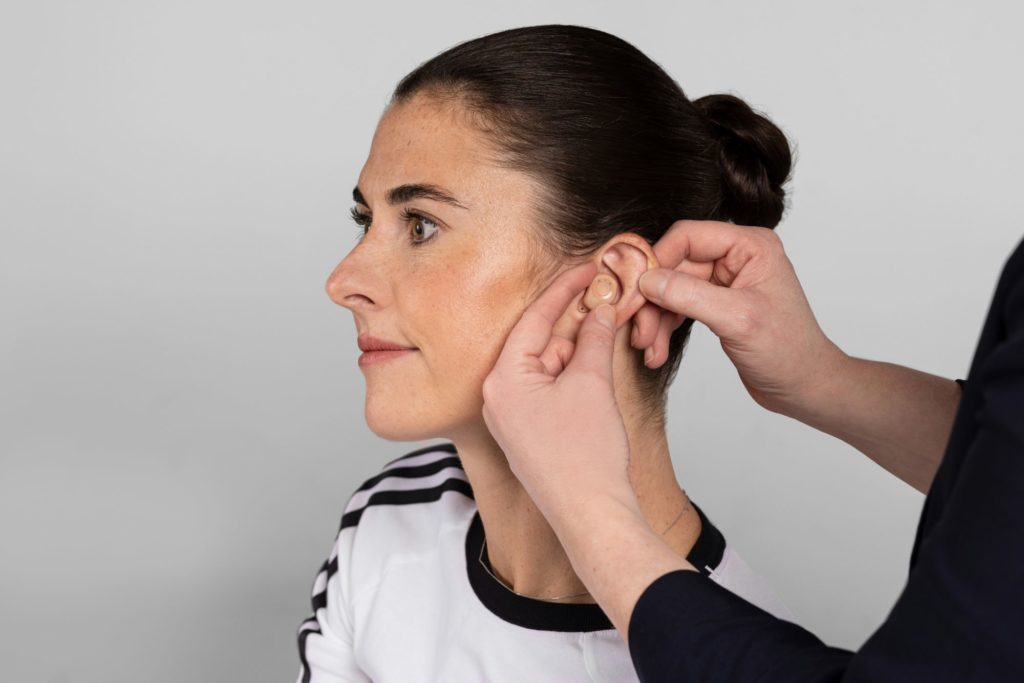


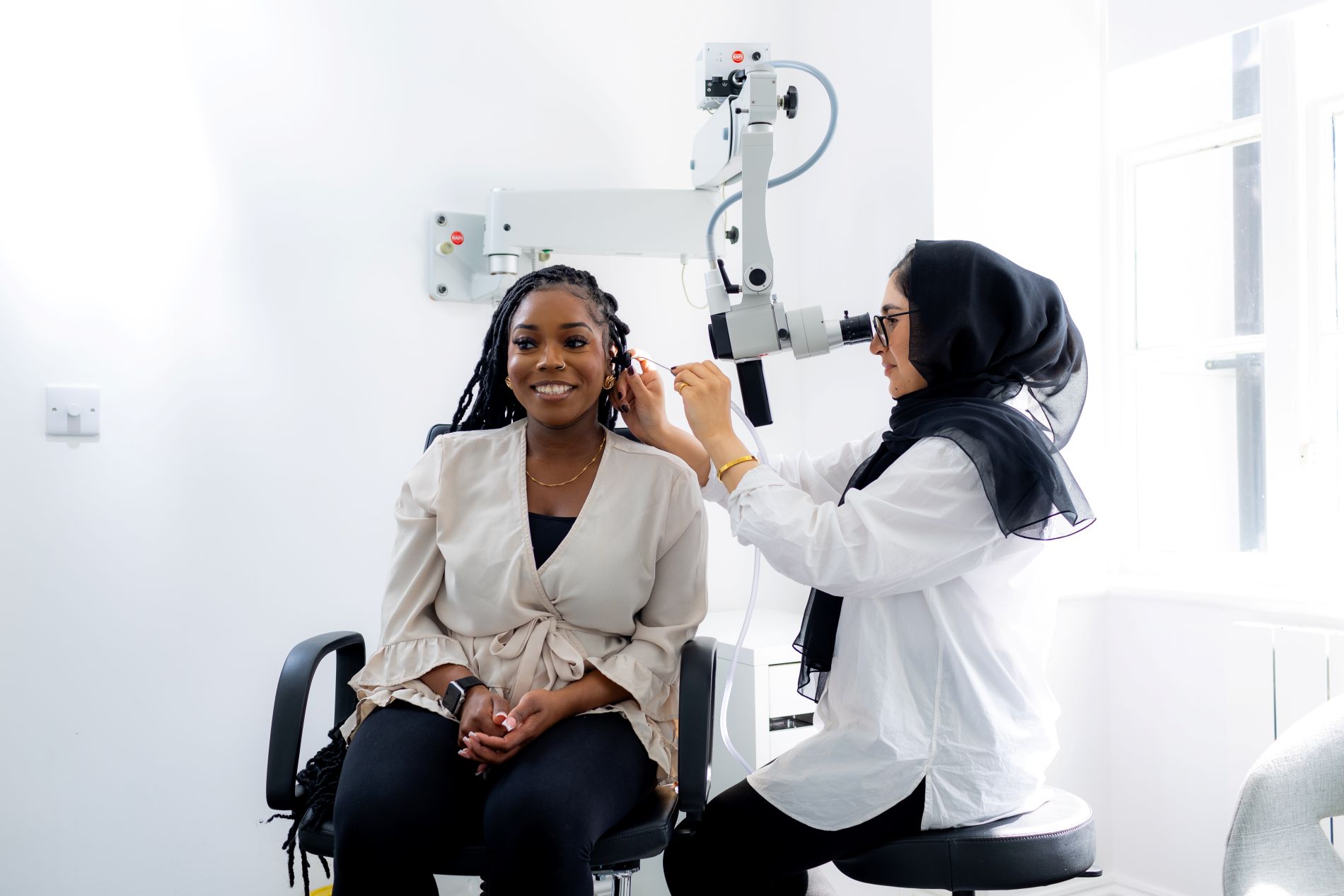



















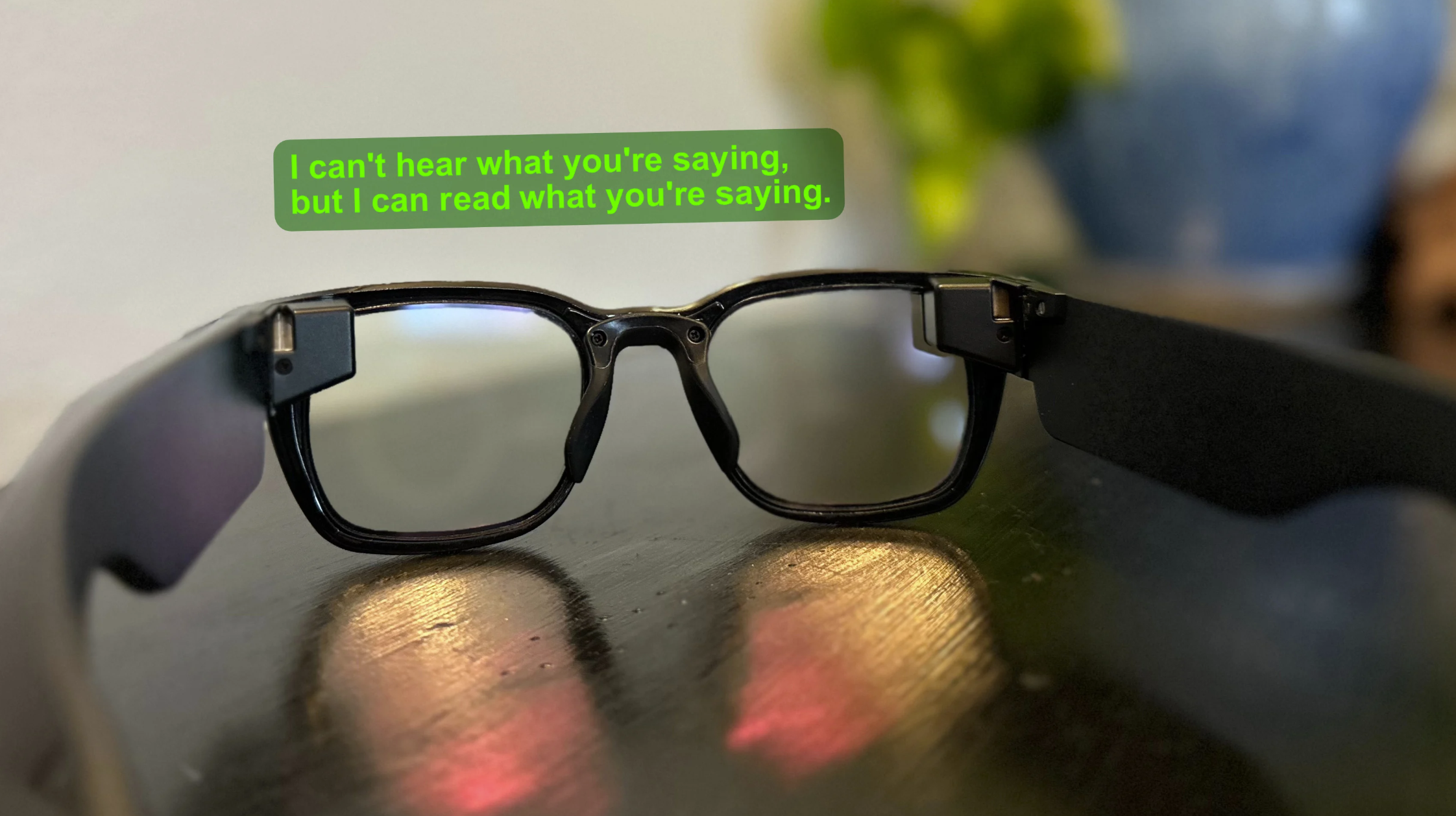



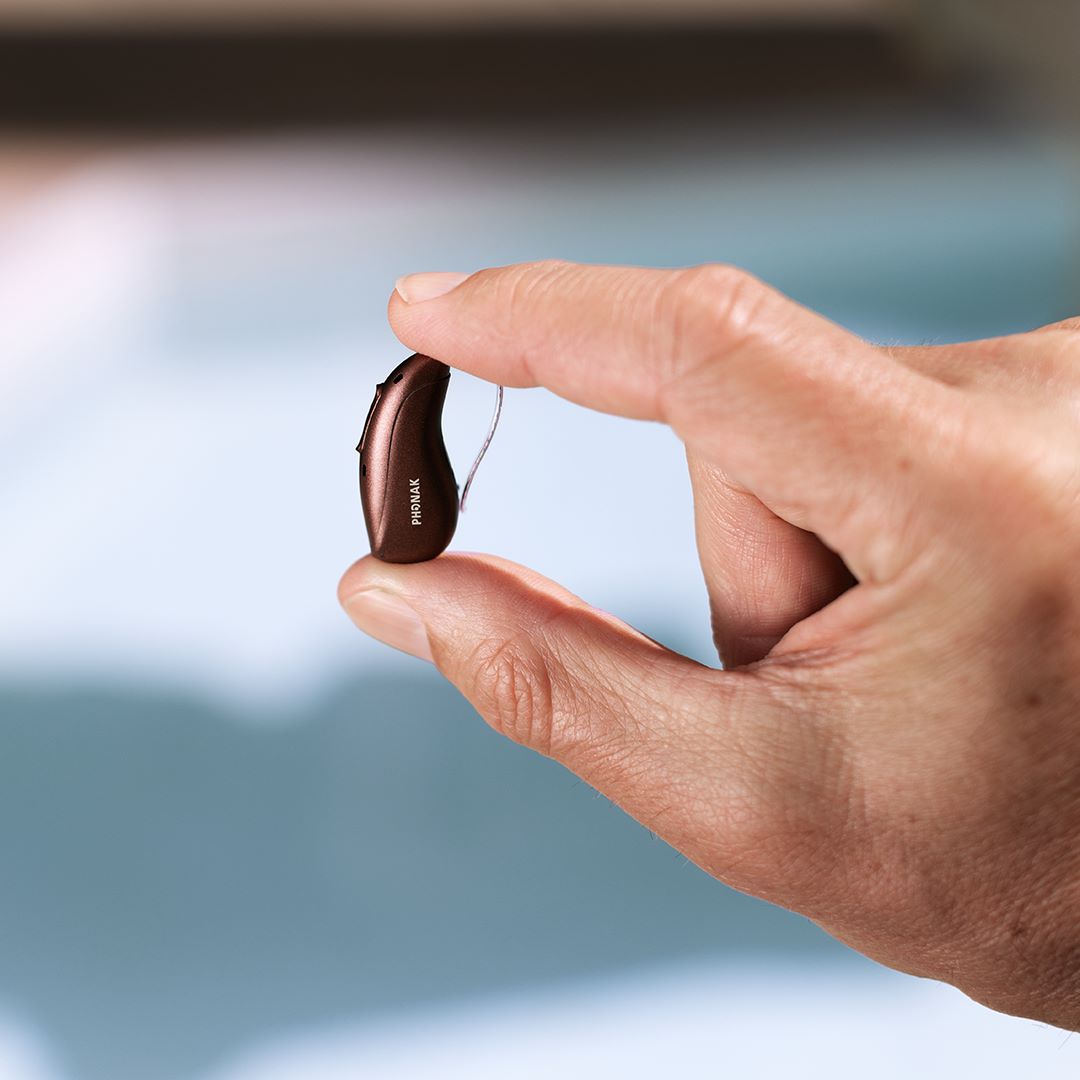
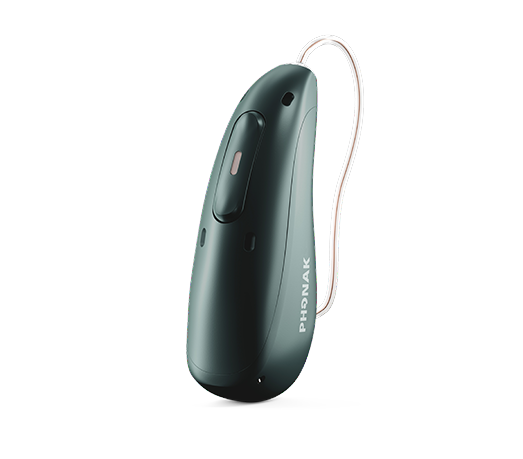










Recent Comments